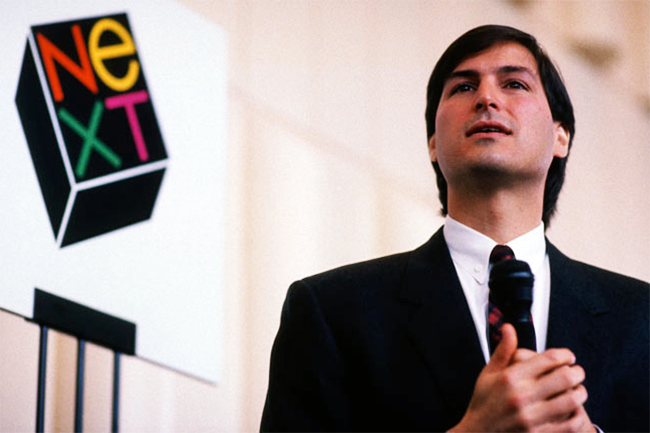
Even with news of Apple’s $3.2 billion acquisition all but confirmed by the very ecstatic, newly-minted billionaire Dr. Dre, all sorts of questions remain up in the air. One of the most pressing: What happens to Beats under Apple’s sprawling corporate umbrella?
Over the past few decades, Apple has rarely deviated from standard for its acquisitions, primarily purchasing companies that can seamlessly integrate into its existing business strategies. In fact, the company has a long history of shuttering existing services, incorporating technologies into its products, and dropping any name associations to their previous life.
Of course, Beats is an outlier. It brings a tremendously successful line of headphones, a streaming service, some high-profile business partners and a huge level of brand name recognition.
As we wait for Apple to officially acknowledge the purchase, let’s take a quick look at some of the biggest and most fruitful acquisitions in the company’s history.
|
What: Computing hardware and software manufacturer When: 1997 Why: OS X How: Frustrated by his diminished role at the company he founded, Steve Jobs left Apple in 1985 and started from scratch with this next-generation computing company. True to the Jobsian ethos, NeXT offered user-friendly, integrated hardware-software solutions at a steep price. Ultimately, the systems would be something of a commercial flop, with only 50,000 systems sold. By 1993, the company was out of the hardware game, but three years later, Apple came knocking. In search of a reinvention to shake the company out of its mid-90s funk, the company scooped up the company for $429 million (which went to investors) and 1.5 million shares (which went to Jobs). With its founder and former CEO back, the company used NeXT innovative software as the foundation for its next-generation operating system, OS X. NeXT’s WebObjects Java app server continues to power Apple’s online offerings including iTunes, iCloud and the Apple Store. |
|
What: MP3 software player for Mac OS When: 2000 Why: iTunes How: Looking to create its own branded MP3 software solution in a Napster-dominated world, Apple looked toward a pair of popular Mac OS players. Panic, maker of the popular, skinnable Audion software, was already wrapped up in talks with AOL. That left the popular Diamond Rio-compatible SoundJam MP as the frontrunner. Apple purchased the company in 2000, and by Macworld the following January, the company announced iTunes 1.0, Apple’s new music software program, which shared more than a few similarities with its brushed metal-stylized predecessor. The next major upgrade would come nine months later, featuring support for the company’s brand-new audio player, the iPod. |
|
What: Gesture recognition software When: 2005 Why: iPhone touchscreens How: Formed in 1998 at the University of Delaware, FingerWorks was inspired by cofounder Wayne Westerman’s repetitive stress issues, as the electrical engineering doctoral candidate searched for a less impactful method of data input. The company’s output included a number of peripherals with now eerily familiar-sounding names like the “iGesture Pad.” In 2005, as the company struggled to find mainstream success, it was acquired by Apple, the company hard at work on the first iPhone. FingerWorks’ touch patents and technologies formed the basis of smartphone’s break from the then-ubiquitous world of physical phone keyboards. |
|
What: Mobile personal assistant When: 2010 Why: Siri How: One of those relatively rare examples of a product that maintained its identity upon being swallowed by Apple, Siri was launched in 2007 as a spinoff of SRI International (originally the Stanford Research Institute). The product began life as part of SRI’s CALO Project, then described as “the largest intelligence project in U.S. history.” Utilizing voice-recognition technology from Nuance, the personal-assistant app let users get directions, find restaurants and complete various other tasks just by speaking. Apple bought the company in 2010, and by April of the following year, had integrated a beta version of the service into the latest version of the iPhone. A week later, the standalone app version of Siri was gone. |
|
What: Maps, maps and maps When: 2013 Why: Apple Maps How: Apple went on quite the acquisition spree in 2013. Over the course of 12 months, the company picked up 13 separate companies — the most the company had ever purchased in a single year. While Cupertino tends to shroud its purchases in secrecy, the reasoning behind a handful of them was pretty clear: Apple was building up its Google Maps competitor in a major way. The company had already made a handful of mapping purchases over the last several years, including Placebase and C3 Technologies, but the rapid succession of HopStop, Embark, Locationary, WiFiSlam, BroadMap all the same year constituted something of a shopping spree, coinciding with the company’s big Maps push for iOS 7 and OSX Mavericks. |
Odds and ends:
In 2002, Apple bought the Germany-based music hardware and software maker, Emagic. It maintained the company’s popular Logic music sequencer, while leveraging employees and technologies to help develop Garage Band.
Lala, which began life as a CD-swapping service in 2006, morphed into a music streaming site before being picked up in late 2009 for $80 million. The acquisition didn’t foreshadow an iTunes streaming service like many expected, but did fuel the release of iTunes Match.
Photo-software maker Polar Rose was snatched up by the company in 2010, bringing its facial-recognition and tagging services to Cupertino.
 Who: NeXT
Who: NeXT Who: SoundJam
Who: SoundJam Who: FingerWorks
Who: FingerWorks Who: Siri
Who: Siri Who: HopStop, Embark, Locationary, WiFiSlam, BroadMap
Who: HopStop, Embark, Locationary, WiFiSlam, BroadMap

